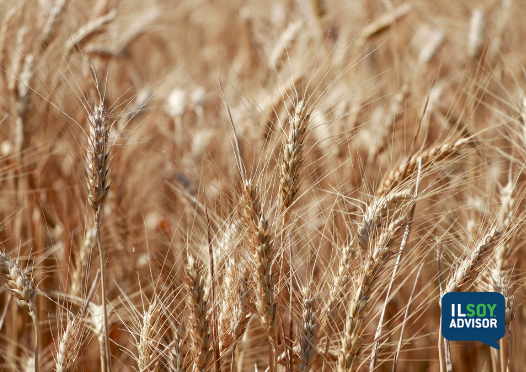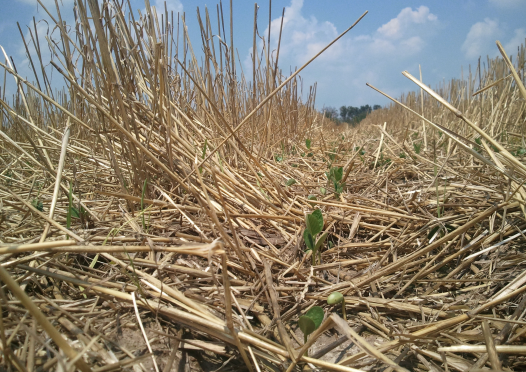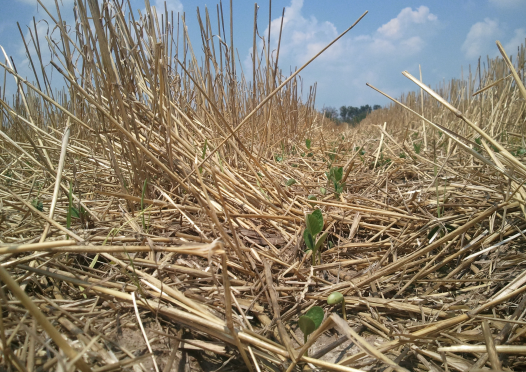ILSOYADVISOR POST
Agronomy: Watch Those Wheat Fields: Weeds and Rust
Down here in southern Illinois most wheat growers plan to plant soybeans after harvesting winter wheat. Their goal is to generate more profit from two crops in a season than growing a single crop; if they achieve that, double-cropping will remain a popular rotation. The road to greater profitability begins with achieving high yields in wheat, followed by high yields in soybeans.
The 2016 wheat crop in southern Illinois has two enemies “preying on the crop” right now: weeds and striped rust.
Where did all these weeds come from?
Well, a lot of wheat acres that got planted in the fall of 2015 were prevent plant acres from the spring of 2015. Those fields had healthy populations of weeds during the summer months that were “killed” by tillage in the fall prior to planting wheat. Due to no crop being grown and no summer control of weeds we had a pretty good seed bank to infest the new wheat crop.
Also, some wheat fields did not get a timely application of herbicide this spring or conditions were not ideal during spraying with all the rain and moisture. Fields have varying levels of control in some areas due to these conditions.
Scouting your wheat fields now can help determine what weed pressure is and what weeds you may be facing as we approach harvest and prepare for double-cropping soybeans.
While you are out scouting for weeds, be on the lookout for foliar diseases. In particular, striped rust.
Striped rust was found in western Kentucky the week of April 4th. It has now been identified in southern Indiana and southern Illinois. The first line of defense against striped rust is variety selection. Check with your seed agronomist to determine what level of susceptibility your varieties have. Then scout!
Resistant varieties likely will not require any additional management for rust disease control; however, a foliar fungicide application may need to be considered for susceptible varieties. Consult with your local agronomy team on what fungicide to use and the timing of applications to prevent or stop striped rust in those susceptible fields.
Most producers apply a fungicide to wheat at flowering to help prevent scab. However, with striped rust that might be too late. So again, scouting is the best defense to know what is going on in your field and when a treatment might be warranted.
Kelly is serving as the Illinois Soybean Association Double-Crop Specialist. He was raised on the family farm in Benton, Illinois and graduated from Southern Illinois University (SIU)-Carbondale with a BS in Agriculture Education and Mechanization, and a Master’s of Science (MS) in Plant and Soil Science. Kelly has spent 25 years as a soil fertility agronomist and precision agriculture consultant in southern Illinois while also spending 4 years as a Farm/Agronomy Manager and GIS Coordinator for a large farm in southeastern Illinois. He is a Certified Professional Agronomist and a Certified Crop Advisor.





Comments
Add new comment